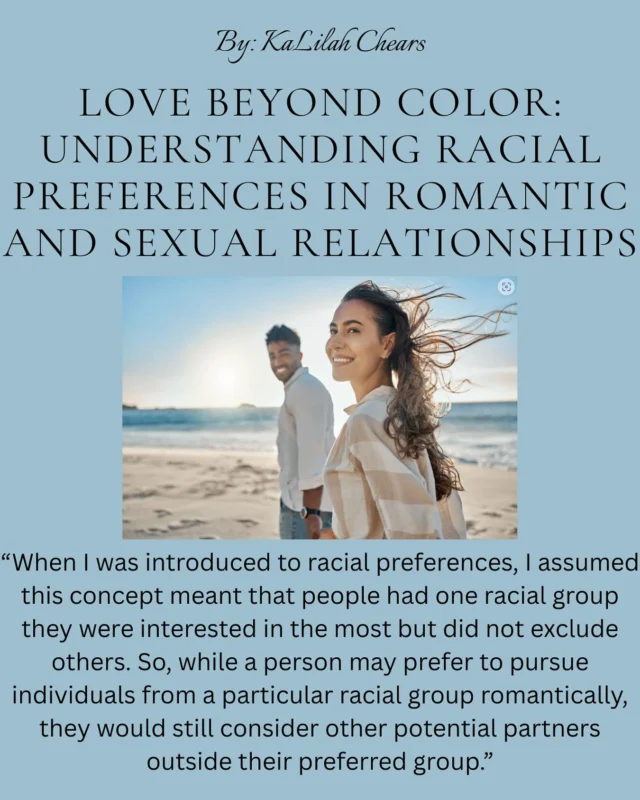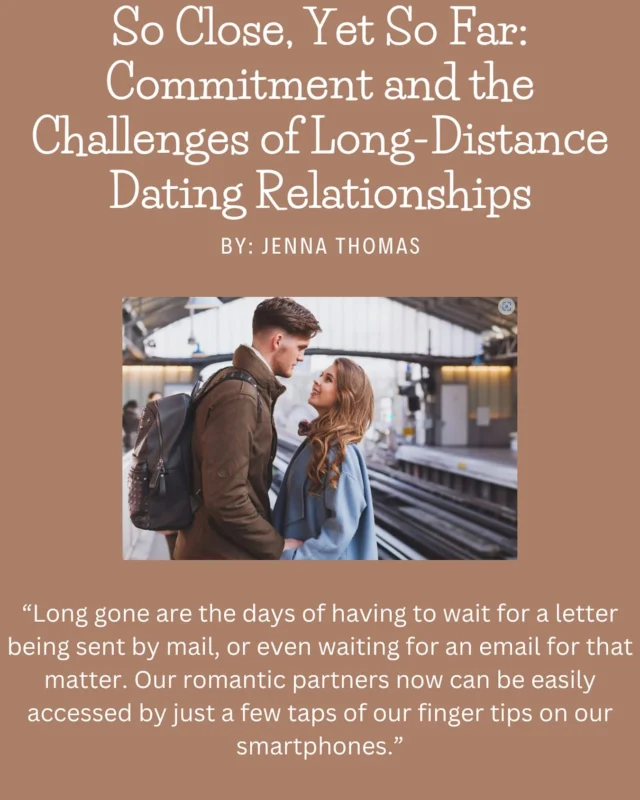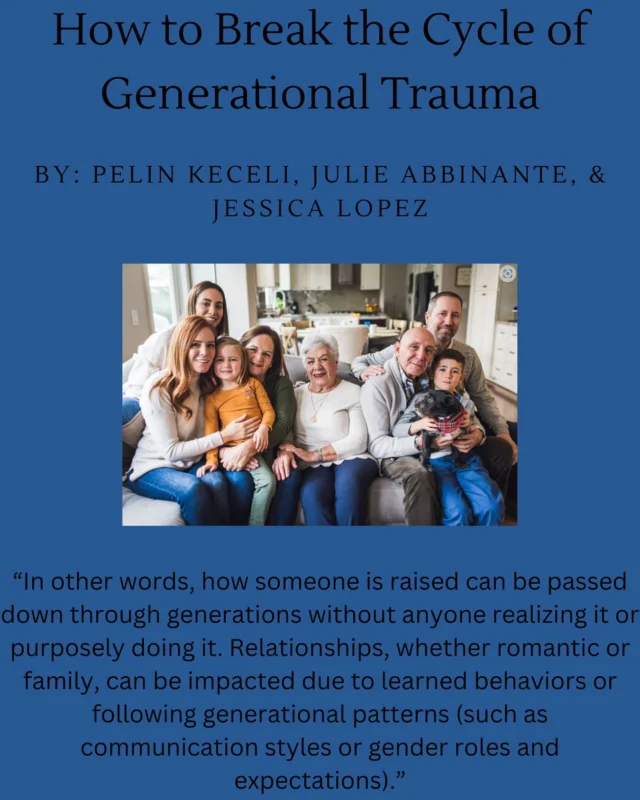Communication is a vital aspect of every relationship. Being open and having the ability to communicate with our partners is extremely important when building a healthy relationship. Emotional expression, availability, and communication skills regarding emotions are strong predictors of relationship satisfaction (Bloch et al., 2014). But truly how willing are we to share our emotions with our partners? Where does this willingness stem from? Openness, ability, and desire to share our feelings and emotions with our partners may be a direct indicator of the attachment style we developed as a child (Collins & Read, 1990). As we have previously discussed on the blog, we can establish stronger emotional intimacy as we are genuine and honest in our communication.
Attachment styles, though typically developed at a young age, follow us throughout our entire life (Huang, 2020). An individual’s attachment style can be defined as a “lasting psychological connectedness between human beings” and typically stems from the way an infant’s primary caregiver interacts with them (Bowlby, 1969). Individuals may develop attachment styles, in which it plays a role as internal working models throughout the rest of their life. As they relate their perception of how their caregiver interacted with them, to how their relationships with others will operate, whether it be romantic or not, attachment styles play a huge role. These different styles include securely attached individuals, as well as insecurely attached individuals, who are divided into avoidant, anxious, and disorganized (Huang, 2020). Our personal attachment styles can have an substantial impact on our ability to express emotions.
A study conducted by Collins and Read explored the influence of attachment styles on relationship satisfaction and formation. In their research, it was determined that not only did the attachment style impact, “self-esteem, expressiveness, instrumentality, trust in others, beliefs about human nature, and styles of loving”, but certain attachment styles typically lead to certain relational patterns (Collins & Read, 1990). For example, an individual exhibiting anxious attachment may be more likely to fear abandonment in relationships (Collins & Read, 1990). Additionally, attachment styles may lead someone to choose a partner/relationship that resembles the relationship that they held with their former caregiver (typically the opposite-sex parent). Read more about those results here (Collins & Read, 1990).
Building a lasting relationship consists of many factors. Among the most important of those factors are trust, communication, and emotional connection, all of which tie into ability and willingness to being open and expressing emotion to your partner. While attachment styles continue to play a role in maintaining a healthy relationship, it may translate into overall emotional regulation, playing just as important of a role. With a lot of research being done regarding emotional regulation and its correlation with relationship satisfaction, results continue to point in the same direction. Data collected by Bloch, Haase, and Levenson found overall greater marital satisfaction when knowing how to understand and listen to your partner expressing their emotions, as well as being able to “downregulate” these emotions (ie, helping your partner deal with them) (Bloch, Haase, & Levenson, 2014). These results reinforce the fact that having healthy discussion and problem-solving skills in regards to emotional regulation in relationships leads to greater satisfaction in said relationships, helping sustain that emotional bond in the long run.
Willingness to share emotions and communicate is not only a beneficial aspect to our relationships overall but continues to have advantageous impacts throughout. Research conducted by Overall and colleagues, explored how expressing emotions to your partner can potentially impact their accuracy when predicting your negative emotional changes in the future (Overall, et al., 2020). The study demonstrated concrete evidence that expressing emotions and willingness to do so was a direct indicator of how accurate one’s partner is when picking out their negative emotions moving forward. Meaning that the higher amount of emotional openness led to a greater accuracy of one’s partner predicting their negative emotions (Overall, et al., 2020). These results indicate that by us expressing our emotions, we can actually in-turn improve our partner’s ability to perceive them. That being said, not all emotions in a relationship will be positive. However, negative emotions coming from your partner are vital to understand as well as being able to properly respond to, in order to sustain a healthy relationship.
When asking ourselves, “Am I emotionally unavailable?” or “Is my partner emotionally unavailable?”, it is important to look first at what being emotionally available actually means. Legg (2020) explains that “emotional availability describes the ability to sustain emotional bonds in relationships”. Signs that your partner may be emotionally unavailable include: you doing all of the work in the relationship, such as making plans; the two of you never seem to develop a closer bond (ie, your level of emotional commitment remains the same); or they never want to use the word “relationship” as a label for what the two of you have (Legg, 2020). Signs that you may be emotionally unavailable include: the inability or unwillingness to commit to them, having the mindset of “keeping your options open”, or feeling hesitant to trust your partner (Legg, 2020). Another indication that you or your partner may not be totally emotionally available to one another could be the cycle of breaking up and getting back together.
If you notice some of these signs in your relationship, whether they are coming from you or your partner, it is not the end all be all. Emotional availability does not come easy to everyone. What is most important, however, is that we evaluate ourselves, as well as having the willingness to put in the work in order to become a better, more emotionally available partner. Taking time to sit down and talk to your partner about the emotional state of your relationship may be a difficult step, but a necessary one to take. This is the best way to not only open up communication in regard to how the two of you express emotion but also to create a space where the two of you can share aspects about yourself. This space will create a supportive environment for you and your partner to discuss changes you may like to make while regulating your emotions. These same steps can be taken whether you find yourself to be emotionally unavailable, you believe your partner may be, or you simply would like to adjust the way the two of you go about sharing your emotions with one another.
Sharing emotions with your partner is not the defining element, however. How we receive our partners’ emotional concerns and expression can also impact the overall willingness for our partner to communicate with us (Ruan, et al., 2020). According to Barton Goldsmith (2016), if one party in the relationship feels that when communicating their emotions, the other is “unsupportive” or “puts them down,” they may be much less inclined to share their emotions in the future (Goldsmith, 2016). Additionally, in a 2020 study conducted by Ruan and colleagues, “perceived partner responsiveness,” was measured as well as willingness for the opposite partner to communicate their feelings (Ruan, et al., 2020). The study found that when put in stressful situations, “higher levels of experimentally induced PPR [perceived partner responsiveness] causally led to greater expression of anxiety.” (Ruan, et al., 2020). These results confirm that not only do attachment styles affect our openness when communicating our emotions, but our perceptions of our partner, or their perception of us, as to how one will respond also holds weight. (See: Emotional Intelligence).
Overall, every single one of us has work to do regarding how we express, and how we receive emotions when communicating with our partners. Taking a look into attachment styles, as well as evaluating ourselves in regard to our emotional availability is the most important first step. While there is no way to change our developed attachment style, as well as no way to change our developed emotional availability, one is not “doomed for life” in terms of relationships. Coming to terms with who you are, and why you are that way is vital in developing healthier ways of communicating with your partner. Putting in this work takes time, and takes patience from you and your partner, but in the end, it is completely worth it! Increasing your willingness to express and receive emotions, you will feel closer with your partner and have the means to develop a deeper emotional bond between the two of you, consisting of stronger trust, communication, and overall commitment.
References
- Bloch, L., Haase, C. M., & Levenson, R. W. (2014). Emotion regulation predicts marital satisfaction: more than a wives’ tale. Emotion, 14(1), 130–144.
- Bloch, L., Haase, C. M., & Levenson, R. W. (2014). Emotion regulation predicts marital satisfaction: More than a wives’ tale. Emotion.
- Collins, N. L., & Read, S. J. (1990). Adult attachment, working models, and relationship quality in dating couples. Journal of Personality and Social Psychology, 58(4), 644–663.
- Goldsmith, B. (2016). Understanding Emotions is Important in Your Relationship. Psychology Today.
- Help Guide. (2020). Emotional Intelligence in Love and Relationships. Help Guide.
- Huang, S. (2020). Secure Attachment and Other Attachment Styles. Simply Psychology.
- Overall, N. C., Clark, M. S., Fletcher, G. J. O., Peters, B. J., & Chang, V. T. (2020). Does expressing emotions enhance perceptual accuracy of negative emotions during relationship interactions? Emotion, 20(3), 353–367.
- Legg, T. (2020). What it Really Means to be Emotionally Unavailable. Healthline.
- Ruan, Y., Reis, H. T., Clark, M. S., Hirsch, J. L., & Bink, B. D. (2020). Can I tell you how I feel? Perceived partner responsiveness encourages emotional expression. Emotion, 20(3), 329–342.
Discover more from Decide To Commit
Subscribe to get the latest posts sent to your email.












